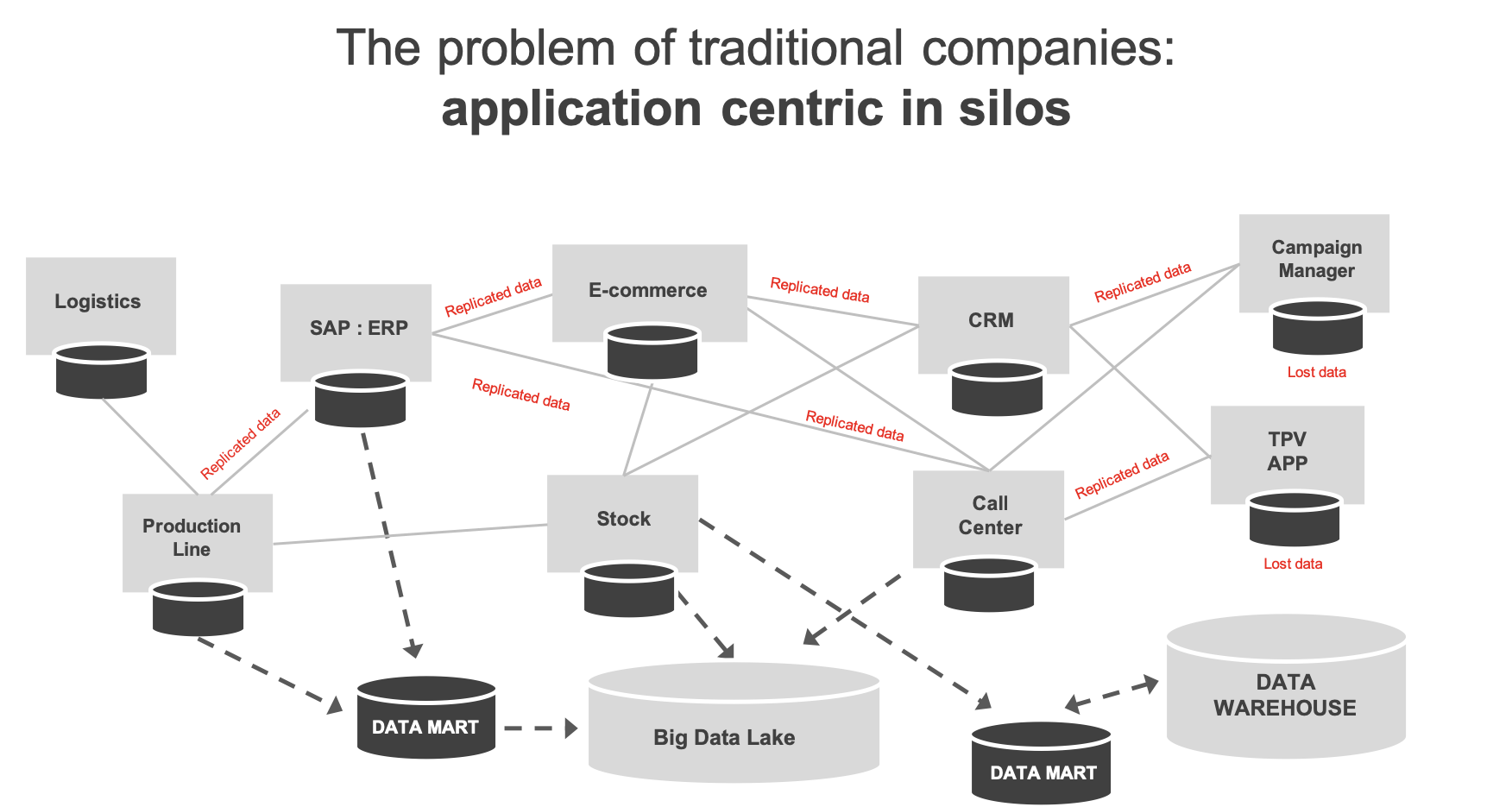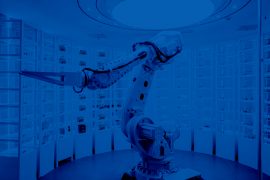“A chain is only as strong as its weakest link” – English proverb
There is one striking element that does not seem to have been addressed as a common purpose between business teams and IT teams when confronting Innovation or Digital Transformation roadmaps… A Data Management Strategy.
Data Management Strategy is still today considered an IT problem that needs to be resolved by technical teams. At best, if you take the case of Financial Services which has been obligated to think about data governance following Basel III regulation, introducing for example the role of the Data Owner which is typically provided by the business, there is still not a joint ownership or strategic discussion about data as an asset – just as a regulatory object.
Between different projects I have been involved in during the past four years, in addition to extensive research to understand the trains of thought across different market players, my view is that to become “truly digital” you need to bring forward to the top of the agenda and at the C-Suite level, (right behind only the business strategy), the data management strategy.
However, is it simply a question of a data management strategy, or should we even be discussing something more specific – a “data centric” management strategy? Let’s have a look in more detail in this two part blog, to understand the key business implications arising from this when we think about becoming a digital player and understand how being data driven may not be enough on its own as indicated by my colleague Alfonso Fernandez in his post “Putting value at the core of your business: Data-driven vs Data-centric”?
Digital businesses
When you think of a digital business, you probably think of companies such as Netflix, Spotify, Airbnb or Amazon just to name a few. What however attracts you as a user, apart from the product offering, to these companies? Probably the customer service associated. Amazon has the capacity to pre-empt your needs or enrich your initial search proposing additional relevant products. Spotify, based on music searches, proposes different preconfigured playlists or similarly Netflix suggests films; both very much in line with what I would look for and often helping me discover new songs or films I wasn’t aware of.
To be able to enjoy these user experiences there is an important common denominator under all of them – data. This could prove confusing however. If we review the mission and value statements of these companies, none of them even mentions the word data. So why should we bother to continue reading this blog? Well the fact is that their mission and value statements look to outline what the company wishes to achieve through their products and services. But all of them look very carefully after your experience as a customer which is at the heart of their business models. To do this successfully a number of algorithms are processed real time to monitor our activity and look to impact us positively at the right moments.

Data is generated as we consume their products and services – otherwise coined as “transactional or operational data”. From a simple product search in Amazon to the consumption of certain types of music in Spotify. Let’s think further on this idea which probably feels at minimum a familiar if not an obvious statement.
We normally think of a customer process associated with any single product in terms of a customer journey. Let’s take a product onboarding process for example. A customer comes into our web and looks into some of our product offering. How do we bring that potential customer closer to conversion? We could make a proactive offering maybe – discounts such as 2×1 – or maybe introduce a live chatbot to interact and explain the product offering – or indeed hyper-personalize menus and pricing all helping to achieve significant increases in conversion rates and subsequently improved revenue. However, unless we do this in real time, the likelihood of conversion will not be so strong. Ergo Amazon or other digital players.
This means that in today’s world we are moving towards the concept of the “fluid” customer journey – and for that matter – fluid business journeys. Ie. We must act both in “real time” and “proactively”. Whether a bank that can offer a client a loan “just at the right moment” or a manufacturer that needs to intervene a production process “just at the right moment” to avoid the write off of a “bad batch” of goods.
Data-Centric Strategy
Pre-empting and reacting in real-time to either increase revenue or avoid costs is key – especially now that the necessary technology is available at ever lower costs. The manufacturing industry is becoming ever more aware of the benefits of a data centric strategy. Take for example a manufacturer. Adding in sensors (IoT/Industry 4.0) to production processes to measure quality in real time, but crucially, combined with a data-centric strategy is opening the door to realize millions of euros in annualized savings through predictive maintenance which could subsequently lead to a reduction in product write off’s. Or implementing sensors in utility companies (IoT/Industry 4.0) along with a data-centric strategy to reduce fraud or pre-empt distribution issues such as a leakage, along with the automation of end-client invoicing processes.
However, if both B2C and B2B industries are ever more aware, why is data strategy not at the forefront of Innovation and Digital Transformation discussions? The reality is that whilst it is easier to link the costs of a business case for developing an algorithm and linking it to a customer or business journey use case, data strategy is far more difficult to pin down and measure – hence it is erroneously often considered more as a cost rather than an investment. Or it is simply “faster” to build yet another siloed database full of uncontrolled and replicated data…

This is at the least surprising. Imagine a restaurant. You have the raw materials – the different ingredients which go into the dishes that you will produce. Any prized chef or restaurant will take care about where it gets its raw material from, how they are received, stored and cared for until use. This all has a cost which is an investment upfront to guarantee the quality of the end product which is what is served on the plate to the end consumer. What is clear is that the kitchen is “one”. Each team in the kitchen is part of the value chain required to produce and serve the different dishes. They have interdependencies with each other and need to coordinate and guarantee the quality throughout their processes. But, there are NO SILOES! Nor indeed are there different replications of the same apple used for the desert!
To conclude…
What does all this tell us? Business objectives must lead the discussion without doubt. This begins with the basics of what problem we want to solve. Whether it be the development/positioning of a product and how we want to link it in with our channels and with what front-end experience; or to improve the quality or efficiency of an industrial production line.
The “FANGs” (Facebook, Amazon, Netflix and Google) have clearly worked this out and look after their data with the same care as any chef, restaurant or manufacturer looks after the raw material they receive to build their end product. Nearly 90% of Alphabet’s revenue comes from advertising which is fed through to the end user who is targeted based upon their activity and consumption of Google’s products; in Facebook’s case this is 98%; Netflix has a subscription based model, but it is data driven for all types of decisions from how it presents a landing page to how it decides which lead characters it highlights to a single user for any given series, or indeed how it provokes a user to come back and complete an unfinished series. Netflix claims that it saves $1BN per year through AI which helps to automate processes and reduce customer churn.
In part two, we will dive deeper into the data-centric strategy itself and look at how best to implement this before drawing final conclusions.





